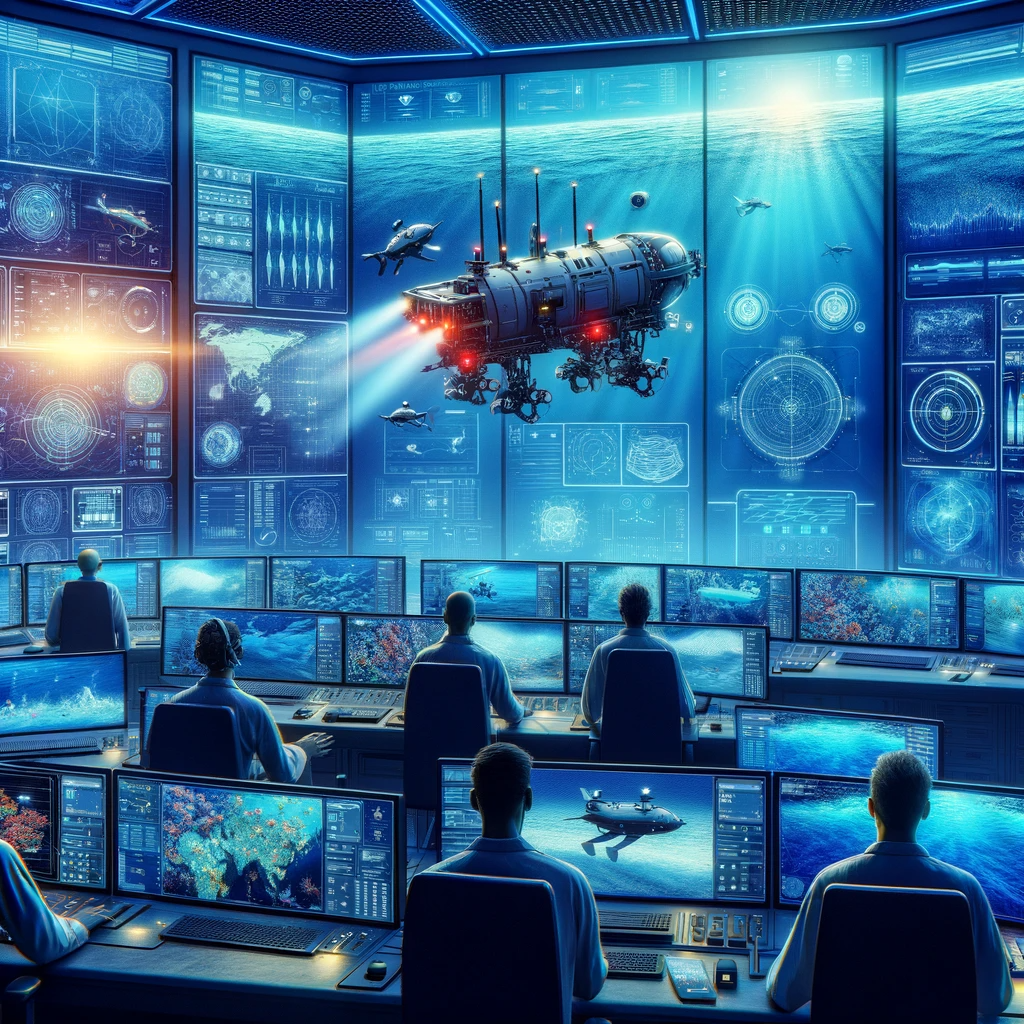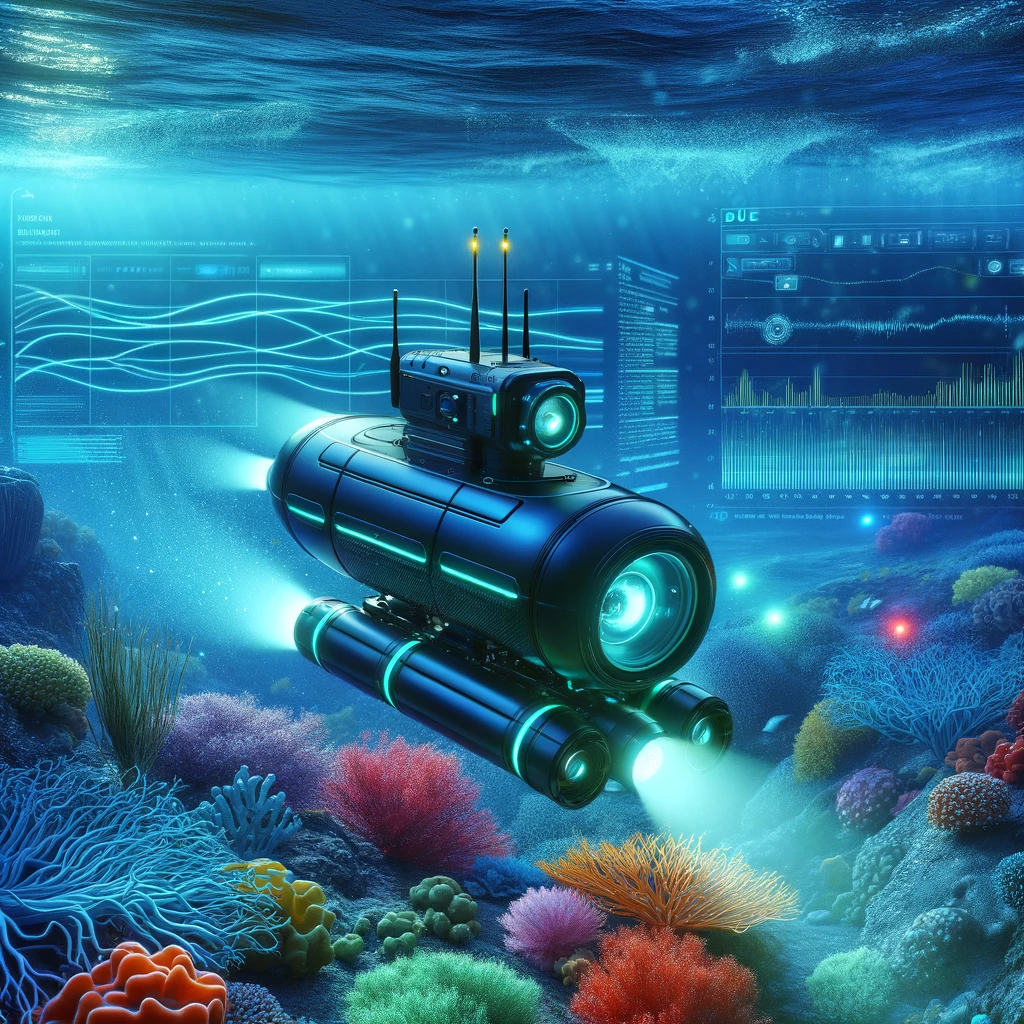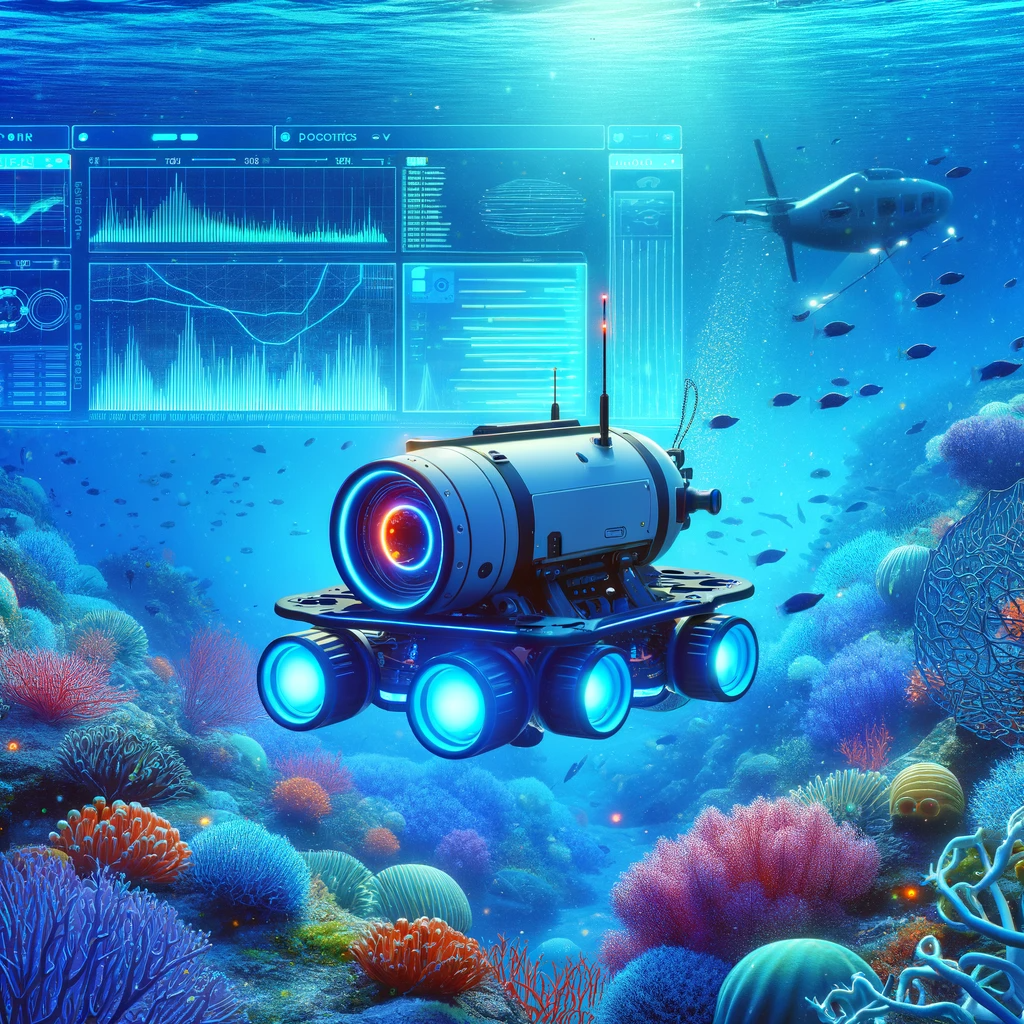The vast and mysterious depths of the world’s oceans have intrigued scientists, researchers, and explorers for centuries. Yet, exploring these uncharted territories has always been a daunting task due to the extreme conditions and vastness of the underwater world. However, with the advent of artificial intelligence (AI) and robotics, a new era of autonomous underwater exploration is unfolding. AI is playing a pivotal role in shaping the future of marine research and ocean exploration by enhancing the capabilities of autonomous underwater vehicles (AUVs) and revolutionizing our understanding of the underwater world.
Unlocking the Mysteries of the Deep
The world’s oceans cover more than 70% of the Earth’s surface, yet less than 20% of them have been explored and mapped. The deep-sea environment remains one of the least understood and most challenging frontiers on our planet. It’s a place of extreme pressures, cold temperatures, and complete darkness, making it inhospitable for humans. As a result, scientists have turned to technology to bridge this gap in our knowledge.

AI-Powered AUVs: Navigating the Uncharted
One of the key advancements in marine research has been the development of autonomous underwater vehicles (AUVs) equipped with AI. These robotic submarines are designed to operate independently, collecting data and conducting experiments in environments that are too dangerous or remote for humans to access. AI plays a critical role in enabling these AUVs to navigate, communicate, and make decisions autonomously.
The Role of AI in Autonomous Underwater Exploration
1. Navigation and Mapping
AI-powered AUVs are equipped with advanced navigation systems that allow them to create detailed maps of the ocean floor. Using sonar and other sensors, these vehicles can generate high-resolution 3D maps, helping researchers discover new underwater features and understand the topography of the seabed.
2. Data Collection and Analysis
Collecting data in the vast ocean requires precise instruments and efficient data analysis. AI algorithms are used to process and analyze the vast amount of data collected by AUVs. These algorithms can identify marine species, track ocean currents, and detect environmental changes, providing valuable insights into the health of marine ecosystems.
3. Underwater Imaging and Video Analysis
AI-powered cameras and imaging systems enable AUVs to capture images and videos of underwater life and geological formations. Deep-sea exploration missions often rely on AI to identify and classify marine organisms and geological features from these images, helping scientists catalog and study the biodiversity of the ocean.
4. Autonomous Decision-Making
AUVs equipped with AI can make real-time decisions based on their sensors and programmed objectives. For example, if an AUV detects an interesting geological formation or encounters an unexpected phenomenon, it can autonomously adjust its path or collect additional data, reducing the need for constant human intervention.
5. Communication and Remote Operation
AI allows AUVs to communicate with researchers and other vehicles in real-time. This capability is crucial for remote operation and collaboration during underwater missions. Researchers can receive live data feeds, send commands, and make decisions based on the information collected by the AUVs.
Applications of AI in Ocean Exploration
1. Climate Research
Understanding the oceans’ role in climate regulation is vital for predicting and mitigating climate change. AI-powered AUVs are used to monitor ocean temperature, salinity, and carbon dioxide levels, providing critical data for climate researchers.
2. Biodiversity Conservation
AI helps researchers identify and monitor marine species, contributing to biodiversity conservation efforts. By studying the behavior and distribution of marine life, scientists can develop strategies for protecting endangered species and their habitats.
3. Resource Exploration
The ocean’s depths hold valuable resources such as minerals, rare metals, and hydrocarbons. AI-driven exploration missions are used to assess the feasibility and environmental impact of extracting these resources.
4. Disaster Response
In the event of a marine disaster, such as an oil spill or a sunken ship, AI-equipped AUVs can conduct rapid assessments of the situation and assist in cleanup operations. They can navigate through hazardous conditions and provide critical data to response teams.

Challenges and Future Prospects
While AI has opened new frontiers in underwater exploration, several challenges remain. AI algorithms need to become more robust to handle the unpredictability of the ocean environment. Additionally, there is a need for improved energy efficiency to extend the duration of underwater missions.
The future of autonomous underwater exploration holds great promise. AI will continue to play a central role in advancing our understanding of the oceans, contributing to scientific discoveries, environmental protection, and resource management. As technology evolves, we can anticipate even more sophisticated AI-driven AUVs that will enable us to delve deeper into the mysteries of the deep sea, uncovering hidden treasures and unraveling the secrets of our planet’s last frontier.
